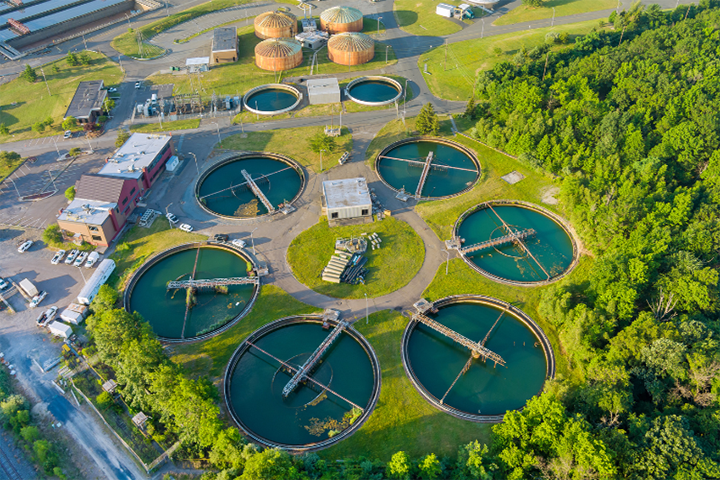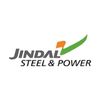WWTP Plant Manufacturer
Wastewater Treatment Plant (WWTP)
A Wastewater Treatment Plant (WWTP) is a vital facility engineered to purify water that has been used in residential homes, commercial establishments, and industrial operations. These plants employ a multi-stage approach, integrating physical methods like screening to remove large debris and sedimentation to settle solids. Chemical processes may be used to neutralize harmful substances or aid in the removal of specific pollutants. Furthermore, biological treatment utilizes microorganisms to break down organic contaminants. The final step often involves disinfection to eliminate disease-causing bacteria and viruses before the treated water is deemed safe for discharge back into the environment or potential reuse.
The comprehensive treatment WWTPs provide is essential for safeguarding public health and protecting ecological systems. By effectively removing contaminants and pollutants, these plants prevent the contamination of rivers, lakes, and groundwater sources. This ensures that water bodies remain healthy ecosystems, supporting aquatic life and providing clean water resources for human use. The role of the WWTP is, therefore, fundamental in maintaining environmental quality and promoting overall well-being within communities.
Why select Hydroflux Engineering for WWTP needs?
Hydroflux Engineering stands out for its profound expertise and delivery of innovative solutions in WWTP manufacturing and services. Their commitment to environmental sustainability and cost-effectiveness make them a preferred partner for reliable wastewater treatment technology.

Our Strengths:
They provide tailored WWTP solutions for specific needs, ensuring efficient and effective treatment outcomes. Hydroflux Engineering's focus on reliable technology guarantees long-term performance and client satisfaction.
- Innovative Solutions
- Tailored Solutions
- Reliable Technology
- Efficient Treatment
- Expertise, innovative, cost-effective, sustainable, tailored, reliable, efficient, treatment, partner, preferred.
What are the operational stages of a WWTP?
The wastewater journey through a Wastewater Treatment Plant (WWTP) begins with physical treatment. Here, screens remove large debris, and sedimentation allows heavier solids to settle. This initial phase prepares the water for more intensive purification.
Next, biological treatment takes centre stage. Microorganisms consume and break down organic pollutants in the wastewater. Following this, secondary settling separates the resulting biological sludge from the treated water. Some plants employ tertiary treatment, such as filtration or disinfection, for further refinement.
Ultimately, the treated water, meeting environmental quality standards, is safely discharged into rivers or lakes or directed for beneficial reuse. WWTPs are vital for safeguarding water resources, protecting public health from waterborne diseases, and maintaining healthy aquatic ecosystems by removing harmful contaminants.
How does our approach address your WWTP Plant needs?
Our approach to Wastewater Treatment Plant (WWTP) projects begins with thoroughly understanding your unique situation. We conduct a detailed analysis of your wastewater characteristics, the relevant regulatory landscape, and your specific operational goals to lay a solid foundation for the project.
Our experienced team recommends the most appropriate treatment technologies for your needs based on this comprehensive assessment. We carefully consider treatment efficiency, overall cost-effectiveness, and potential environmental benefits. Furthermore, we accurately determine the necessary plant capacity based on your projected wastewater volumes and desired treatment outcomes.
Throughout the entire process, we place a strong emphasis on collaboration and open communication. We offer tailored solutions and expert guidance at every stage, ensuring that the final WWTP design seamlessly aligns with your objectives, ultimately delivering efficient, sustainable, and compliant wastewater treatment solutions.
What are the various technologies used in WWTPs?
Here are the different types of technologies employed in Wastewater Treatment Plants (WWTPs):
- Activated Sludge Process: Microbes in aerated tanks break down organic pollutants.
- Sequencing Batch Reactor (SBR): Batch operation allows sequential treatment in one reactor.
- Membrane Bioreactor (MBR): Merges biological treatment with membrane filtration for high-quality output.
- Trickling Filter: Fixed media beds support microbial growth for organic removal.
- Rotating Biological Contactor (RBC): Rotating discs with microbial biofilms provide biological treatment.
- Oxidation Ditch: Continuous channel with mixers aerates for biological treatment.
- Dissolved Air Flotation (DAF): Air bubbles float solids for removal.
- Extended Aeration Process: Longer aeration time for low-to-medium strength wastewater treatment.
- Constructed Wetlands: Natural processes and plants treat wastewater.
- Electrocoagulation: Electrical charges thicken and remove wastewater contaminants.
Frequently Asked Questions (FAQ)
Our Clients Testimonials
Our clients consistently commend our high-quality manufacturing and the effectiveness of our wastewater treatment services, encompassing STP, ETP, WTP, Industrial RO, Softener, OWC, and more, delivering exceptional results.
Hydroflux provided an STP system for one of our large residential projects. The plant has been running smoothly, and we’re reusing treated water for landscaping and flushing. Their team did an excellent job with installation and support.

Ravi Sharma
L&T ConstructionAt our telecom office site, Hydroflux installed a compact RO + WTP system. The system is low-maintenance, efficient, and gives us good water quality. They handled the project professionally.

Rajeev Arora
Airtel Facility TeamHydroflux installed a wastewater treatment system for our manufacturing unit. The plant works as per industrial discharge norms. Their timely service and AMC support have been great.

Meenal Kapoor
Samsung ElectronicsWe required an industrial ETP with a ZLD setup. Hydroflux delivered exactly what we needed. Their design is robust and helps us recycle water back into our process lines.

Anil Deswal
Jindal Steel & PowerOur university uses Hydroflux STP to manage sewage within the campus. The treated water is used for gardening, and the plant is eco-friendly. Their technical team is cooperative and trained our staff well.

Dr. Aftab Khan
Jamia Hamdard UniversityWe used Hydroflux for WTP system installation at one of our metro depots. The water treatment system is reliable and easy to maintain. Their service team is always on time.

Sandeep Malhotra
Delhi Metro Rail Corporation (DMRC)We use Hydroflux’s STP and ZLD solution at our bottling plant. Water reuse and discharge quality have both improved. Their ZLD setup helped us clear compliance smoothly.

Vikram Joshi
Pepsi Bottling Unit (Jai Beverages)We installed a RO plant at our Sikandrabad tiles factory. The system provides consistent water quality for tile processing. Very effective and energy-efficient.

Sanjay Singh
Kajaria CeramicsHydroflux installed a compact STP system at our food production plant. Treated water is reused for utility and cleaning. The system is easy to run and completely odorless.

Poonam Verma
Haldiram’s Production UnitOur Gurgaon residential projects have Hydroflux’s STPs. They help us recycle and reuse water, which supports our green building certifications. We’re satisfied with their support even after handover.

Meena Rathi
Raheja DevelopersHydroflux delivered a 690 KLD STP plant for our township. The plant runs automatically and treats large volumes efficiently. It’s been a valuable addition to our sustainability goals.

Ritesh Goyal
Omaxe LtdWe installed an STP from Hydroflux for our resort. Water from bathrooms and kitchen is now treated and reused in our gardens. The plant is silent and blends into our eco-friendly theme.

Arjun Mehta
Best Western ResortHydroflux installed a small but high-efficiency ETP at our Manesar unit. We’ve had no major issues and water discharge is always within limit. Their service is quick and professional.

Priti Sharma
Donaldson India Filter SystemsWe’re using Hydroflux’s STP in our hotel’s backend operations. The system helps us recycle greywater for flushing. Their setup is clean, quiet, and very effective.

Ramesh Yadav
Radisson HotelsHydroflux supplied a robust ETP system for our Bokaro cement plant. It handles high loads and treats effluent effectively. We’ve seen a clear improvement in compliance and water reuse.

Alok Sharma
Dalmia Bharat CementWe installed a compact RO + WTP setup at our Manesar unit through Hydroflux. It runs quietly and requires very little manual handling. The system is reliable and consistent in water output.

Tanya Mehra
BRADY Company India Pvt LtdHydroflux provided an automated ETP solution at our Vapi facility. The system helps us recycle water and control our wastewater discharge. Their service support is excellent even post-installation.

Ritu Jain
HAVELLS IndiaAt our printing unit, Hydroflux installed a RO plant to ensure water quality for ink processing. The plant has reduced scale issues and improved equipment life. It was a great decision to go with them.

Saurabh Chawla
Dainik BhaskarHydroflux provided an MBR-based STP for our Gurgaon campus. The treated water is clear and odorless, perfect for reuse. We are happy with their engineering and service quality.


